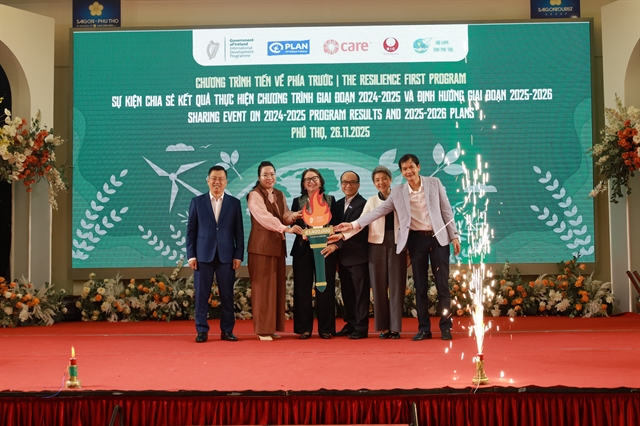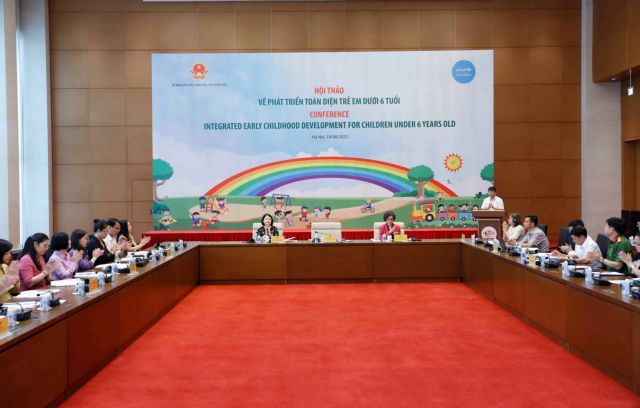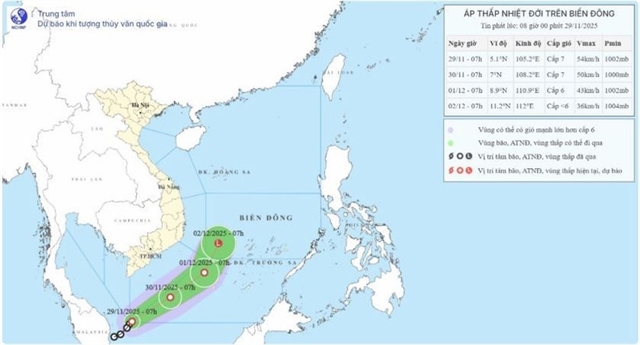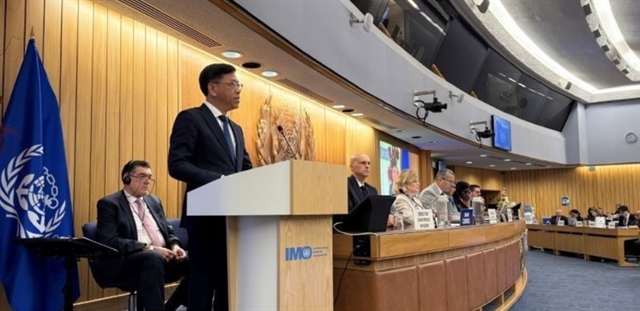 Society
Society


|
| The conference on comprehensive child development for children under six years old, which is jointly organised by the National Assembly's Committee on Culture and Education and the United Nations Children's Fund (UNICEF) in Việt Nam, takes place in Hà Nội. — VNA/VNS Photo An Đăng |
Khánh Linh
HÀ NỘI — Việt Nam needs to prioritise allocating financial resources for the comprehensive and integrated development of children, especially during their early years, to ensure their full growth and realisation of their potential, policy makers and experts said on Friday.
They made the statement at the comprehensive child development conference for children under six years old, jointly organised by the National Assembly's Committee on Culture and Education and the United Nations Children's Fund (UNICEF) in Việt Nam on Friday in Hà Nội.
Speaking at the conference, Deputy Head of the NA's Committee on Culture and Education Tạ Văn Hạ affirmed that Việt Nam consistently prioritised policies and created the best conditions for the comprehensive development of children. The documents of the 13th National Party Congress defined maintaining a Human Development Index (HDI) above 0.73 by 2030 as one of the criteria for the national development in order to foster a high-quality workforce. Comprehensive child development remained a fundamental and important solution in the country's future development strategy.
Hà stated that Việt Nam's legal system and policies were progressively improving, providing conditions for children to develop comprehensively in terms of intellect, physique, and aesthetics. The NA has enacted the Law on Children and several related laws, such as the Laws on Marriage and Family, Education, Medical Examination and Treatment, all of which included provisions for children's rights. The Government has also issued initiatives for the comprehensive development of children in their early years within families and communities during the period of 2018-2025, and approved the National Action Programme for Children for the period of 2021-2030.
Việt Nam has achieved positive results, he said. Over 90 per cent of children under five years old receive appropriate care and development in terms of health, education, and social well-being. nearly 67 per cent of children attend preschools. The under-5 mortality rate has reduced from 39.6 per cent in 2001 to 18.9 per cent in 2022. The mortality rate due to accidents and injuries in children has decreased from 17.3 per 100,000 children in 2019 to 17 per 100,000 children in 2020.
However, children were facing a number of challenges, he said.
In terms of nutritional care, Việt Nam was grappling with three burdens, including malnutrition, obesity, and micronutrient deficiency. There was an increasing prevalence of childhood obesity in major cities and a prevalence of undernutrition and stunting in mountainous and disadvantaged areas.
Access to preschool education was not yet fully covered, especially for certain disadvantaged groups of children such as those of industrial workers, ethnic minorities in mountainous regions, and migrant children following their parents.
Child accidents and injuries continued to occur. Each year, nearly 3,900 children under five years old died due to various causes, with drowning being the leading cause, causing almost 2,000 child deaths.
The implementation of the 2016 Law on Children and the responsibilities of various levels of the NA have not been fully realised, he added.

|
| Significant disparities in malnutrition rates and early childhood education among regions are the most substantial challenge in ensuring comprehensive development for all children. — VNA/VNS Photo |
Lesley Miller, deputy representative of UNICEF in Việt Nam, said Việt Nam was a pioneering nation both regionally and globally in the comprehensive development of children as the country has early ratified the Convention on the Rights of the Child.
Amid the challenges posed by the impact of COVID-19, global economic recession, natural disasters, and climate change, Việt Nam, like many other countries, must make efforts to achieve Sustainable Development Goals (SDGs), particularly those related to children.
According to UNICEF data, in terms of nutrition, over 50 per cent of infants are not exclusively breastfed for the first six months. More than half of children aged 6-23 months lack adequate nutritional intake.
Each year, over 200,000 children under five years old suffer from acute malnutrition, with 90 per cent of them not receiving treatment.
Disparities in education also exist between regions and ethnic groups. Only 37.8 per cent of Khmer children and 47.6 per cent of children in the Mekong Delta attend preschool, compared to 80.2 per cent of Kinh children.
Việt Nam's child development index in 2020 was 78.2 per cent, significantly lower than the targets of 99.1 per cent by 2025. Therefore, Việt Nam needed to double its efforts to reverse this situation and achieve these targets, she emphasised.
Providing recommendations, Lesley Miller suggested that Việt Nam review the implementation of the National Action Programme on Comprehensive Child Development and make necessary adjustments to achieve the set goals and indicators by 2025, while preparing for the upcoming 2026-2030 phase in line with its sustainable development agenda.
During the period of 2018-2022, expenditure on childcare and child protection accounted for a modest share of about 0.18-0.23 per cent of the Government's social security budget. Hence, the NA should enhance the oversight role of elected bodies at all levels in planning and implementing policies concerning children's rights, especially in budget allocation and utilisation.
Furthermore, Việt Nam needed to enhance its data system with essential indicators for child development, enabling tracking progress and providing information for policy planning and implementation.
Regarding the issue of child malnutrition, she recommended that the Government establish sustainable financial mechanisms to ensure that all severely malnourished children receive treatment according to national standards, including leveraging health insurance resources following the amended Health Insurance Law.
Trần Đăng Khoa, deputy head of the Ministry of Health’s Maternal and Child Health Department, stated that the ministry has developed and refined treatment guidelines for severely malnourished children.
It has organised treatment for underweight children in disadvantaged areas. It is also in the process of crafting specialised guidelines for nutritional regimes for children under six years old with medical conditions, he said.
Khoa noted that there was a need to prioritise allocating funds to implement nutrition and care plans for children, and including the target of reducing child malnutrition as one of the socio-economic development indicators at both national and local levels is crucial.
Vũ Thị Kim Hoa, deputy director of Ministry of Labour, Invalids and Social Affairs’ Children Department, emphasised that creating a safe environment for children within families, schools, and communities, as well as enhancing knowledge and skills for parents and caregivers, was a prerequisite for preventing child accidents and injuries.
"Enhancing community awareness on this issue is important. The ministry has collaborated with various ministries and international organisations to implement over 100 communication products focused on preventing child accidents and injuries, drowning prevention for parents, and developing eight training manuals for grassroots-level officials," she stated. — VNS




